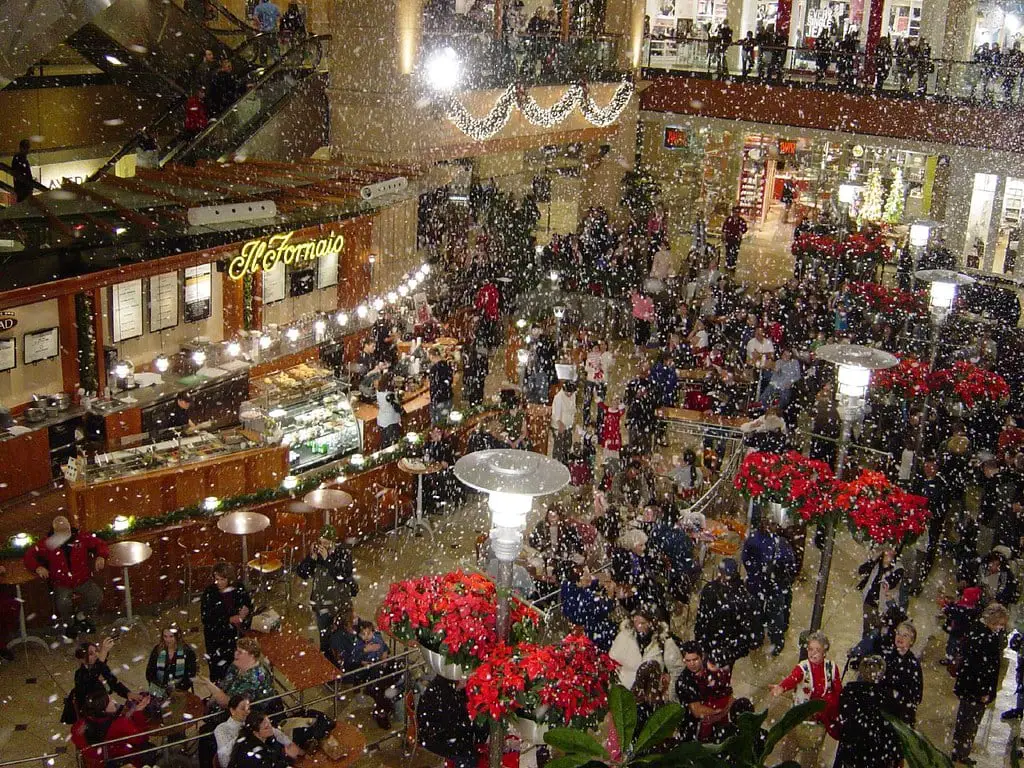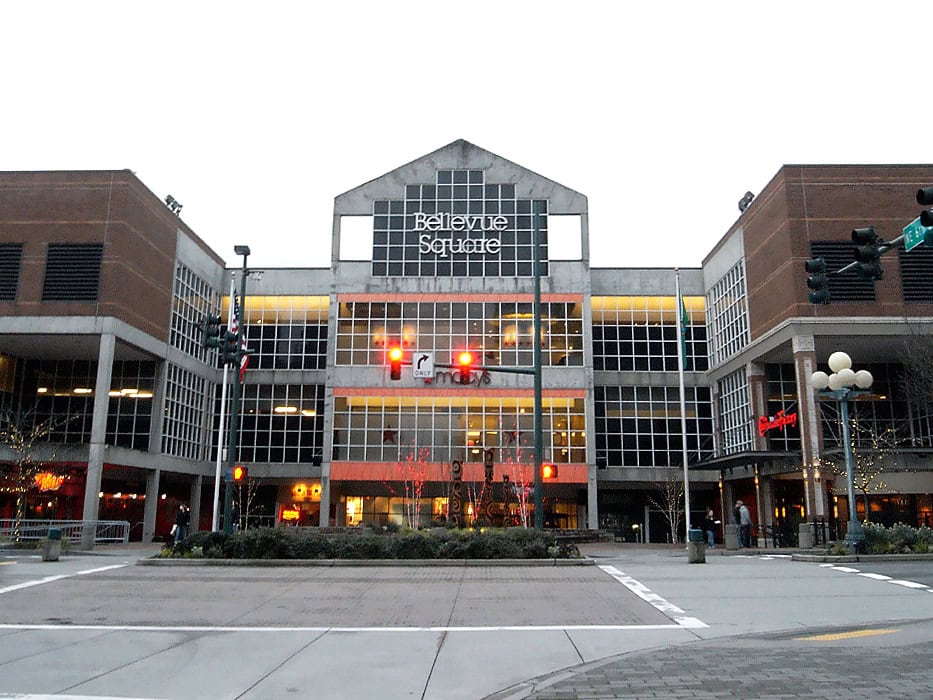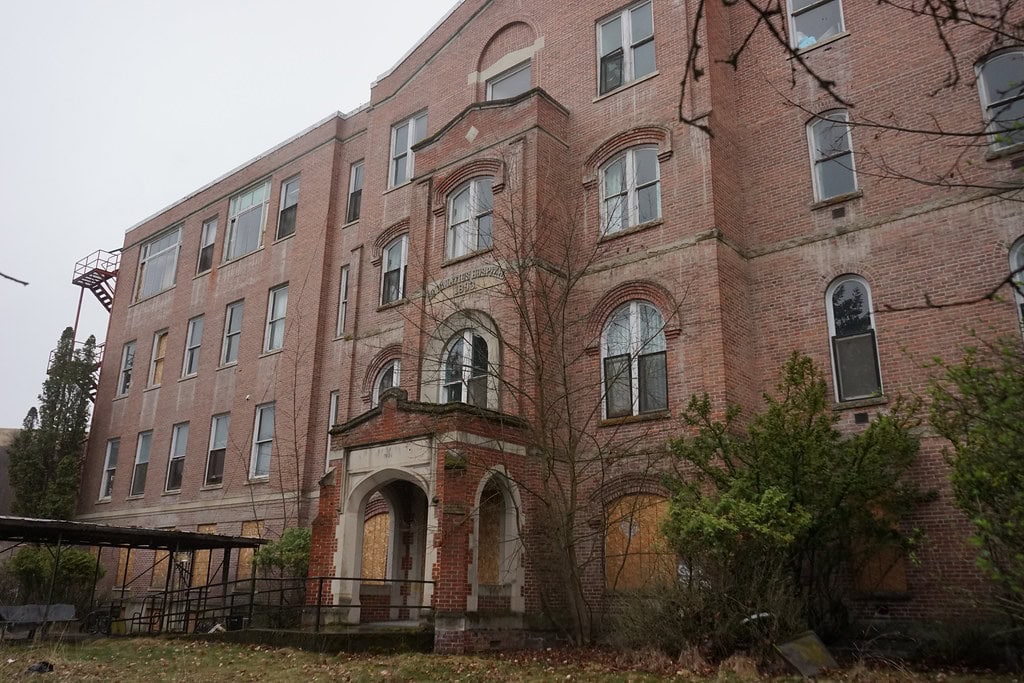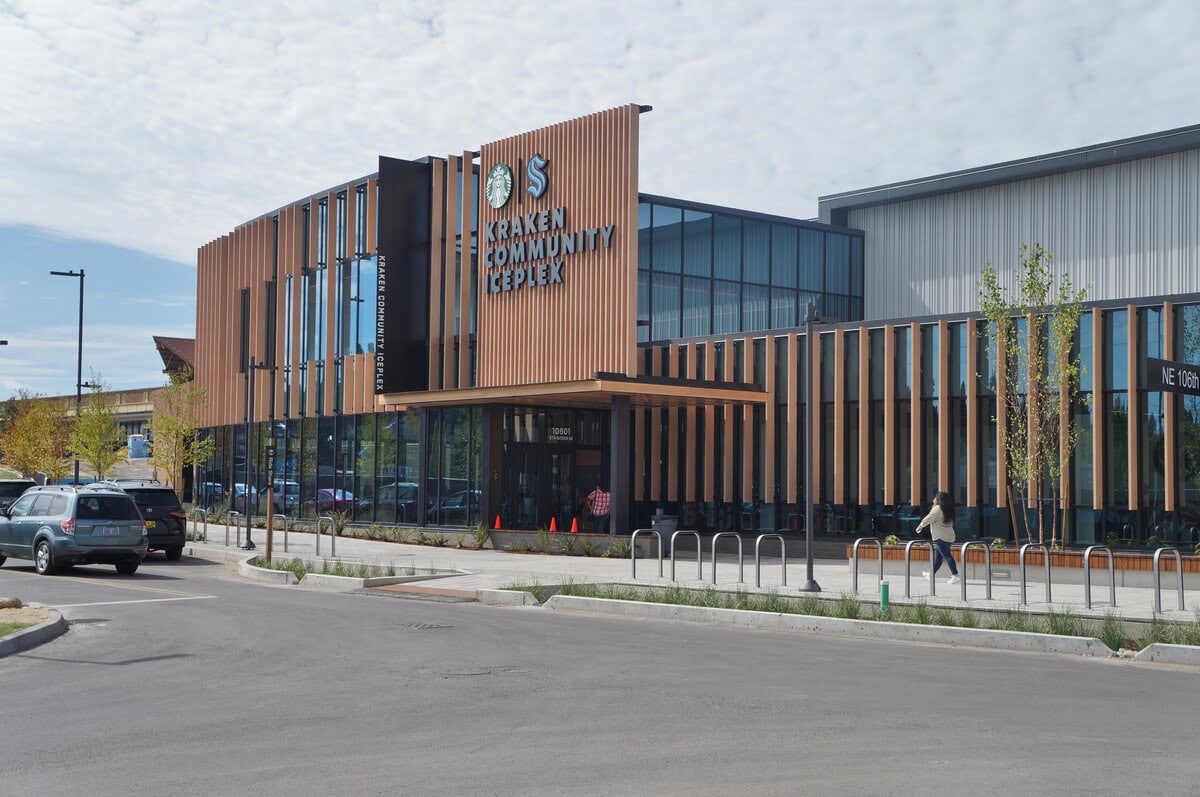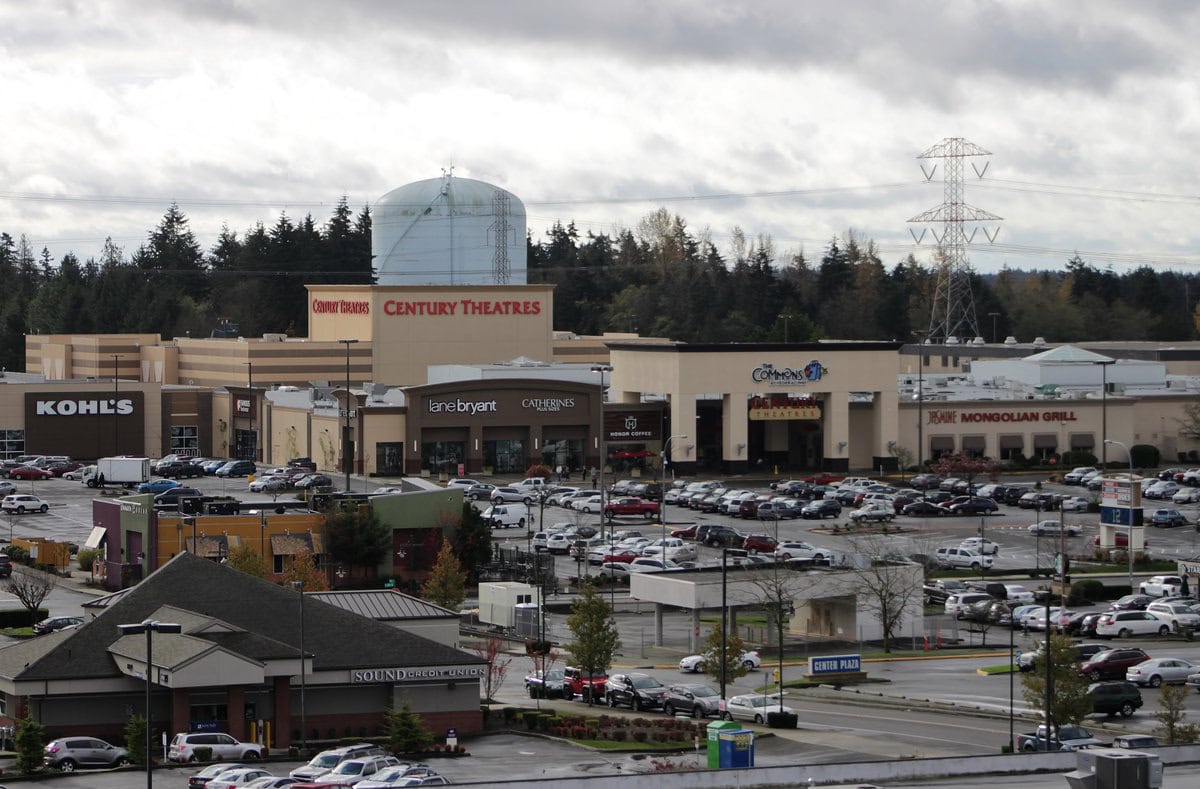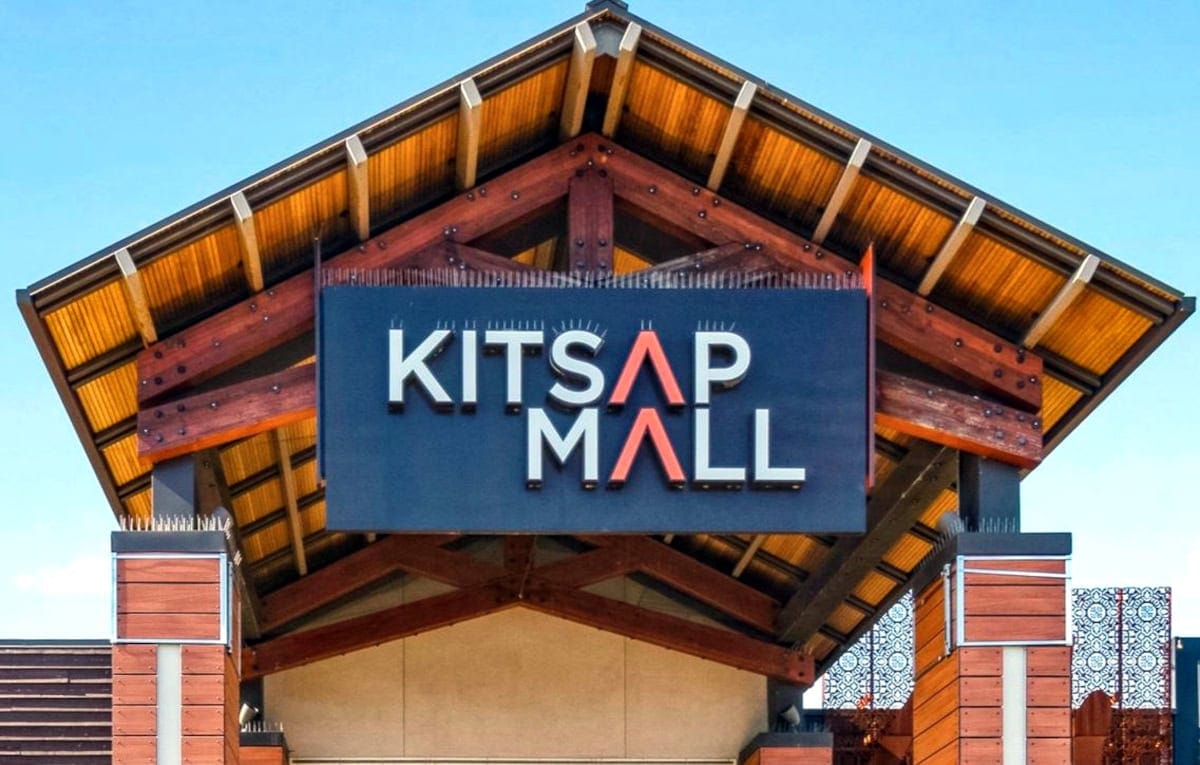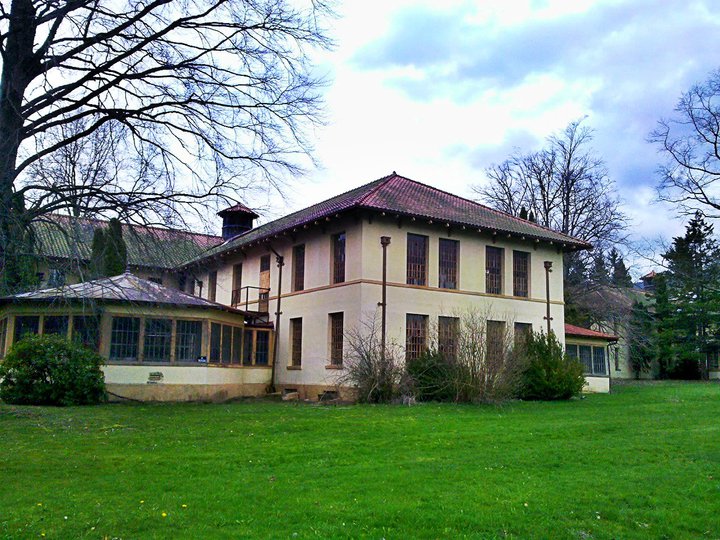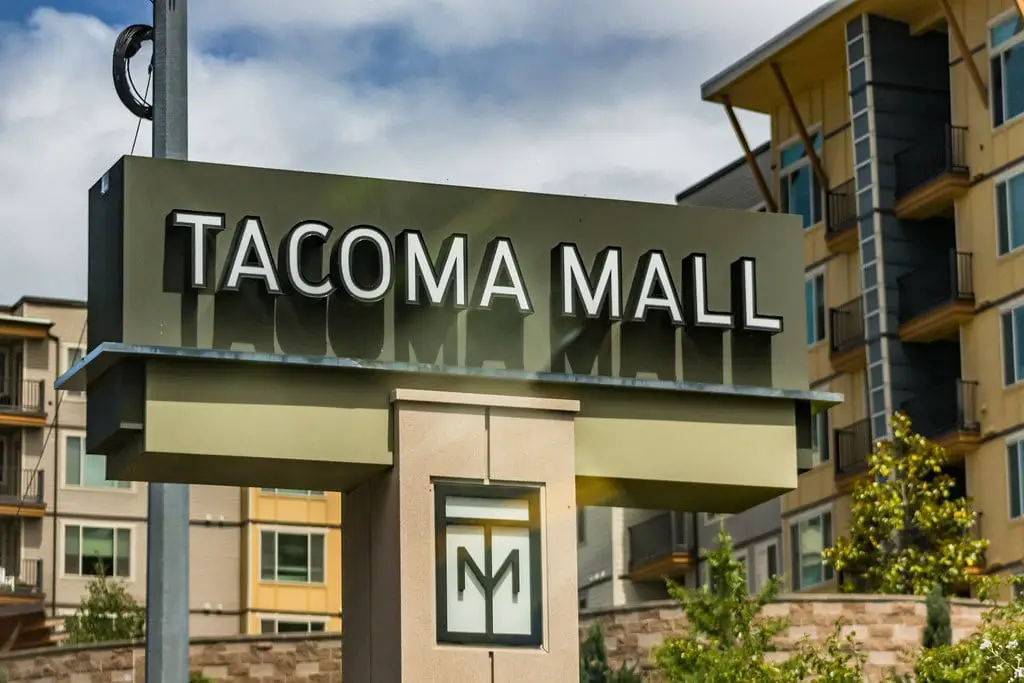Real Estate Layers Before Retail – Pacific Place Site Use (1909–1970)
Long before the first storefront opened at Pacific Place, the block between Sixth and Seventh Avenues in downtown Seattle had already experienced decades of commercial use.
In 1909, a six-story brick structure went up at the corner of Seventh Avenue and Olive Way.
Known as the Electric Building, it served as the headquarters for the Seattle Electric Company, a central player in the city’s early streetcar operations at the time.
Across the street, another piece of transportation history took root.
The site at Sixth Avenue and Olive Way housed the terminal for the Seattle-Everett interurban rail line, part of the Pacific Northwest Traction Company and later under Puget Sound Power and Light.
By 1926, the terminal changed hands and moved out of utility ownership, stepping into private investment territory.
Fast-forward to November 1943.
The entire block had transitioned from rail and office use to something far more auto-oriented: a parking lot and gas station.
Standard Oil Company of California purchased the land and opened a three-level underground parking garage on June 6, 1947.
The garage could hold up to 450 cars—a direct response to the growing car culture in mid-century Seattle.
In 1951, department store Frederick & Nelson stepped in.
They arranged to buy both the garage and, later, the Electric Building.
By 1954, construction was underway on a six-level garage that spanned the block and absorbed the older parking structure.
That project required the city to vacate an alley between Sixth and Seventh Avenues.
It wrapped up within a year.
As part of that deal, Frederick & Nelson also acquired the Electric Building in December 1956.
The structure briefly found new use as a temporary downtown library from 1957 to 1960, filling the gap during the construction of the new Seattle Central Library.
After that, it sat unused for a decade.
It came down in October 1970, clearing the way for future development, even if no one had called it Pacific Place yet.
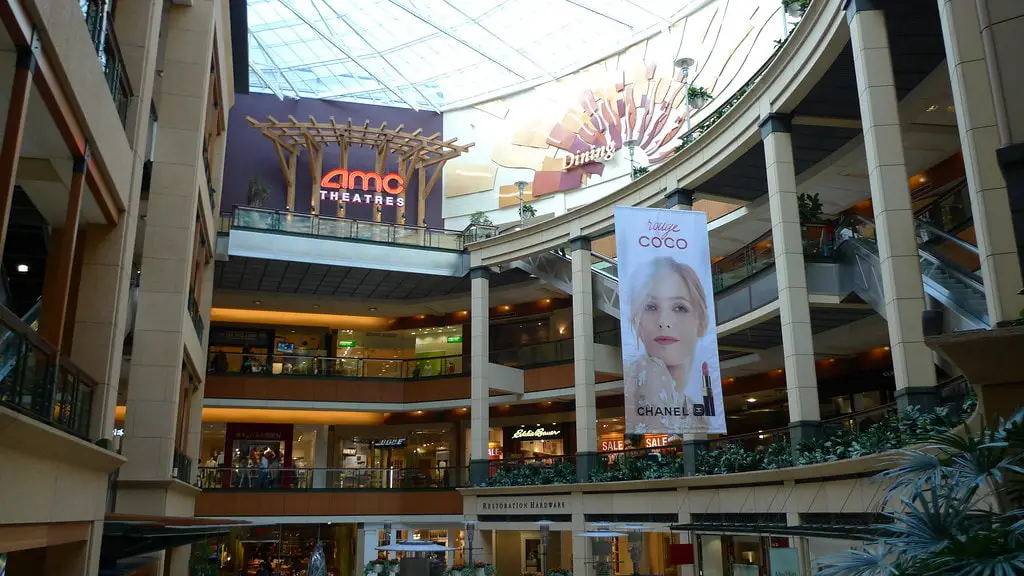
Ground Lease to Grand Opening – Retail Investment Takes Shape (1993–1998)
In 1993, developers saw potential in an overlooked block near Pine Street.
What had once been part of a multi-level parking structure was now being eyed for a new use: high-end retail.
This wasn’t a standalone vision—it aligned with the plan to turn the old Frederick & Nelson building across the street into Nordstrom’s flagship store.
That project helped set the tone for what came next.
Pine Street Development took the lead.
Backed by a mix of Seattle-based investors, the group included Jeff Brotman and John McCaw, with other financing tied to Howard Schultz and musician Kenny G. The group’s pitch wasn’t flashy, but it leaned into a downtown revival strategy: draw shoppers and visitors back to the city core.
The design work went to the architecture firm NBBJ, which drafted plans for a five-story retail center with a cinema, dining floors, and a glass-covered atrium.
They also added a sky bridge linking the new structure to Nordstrom—practical and symbolic.
Construction moved quickly, with site work and vertical development happening over a two-year window.
Pacific Place opened its doors on October 29, 1998.
The new mall spanned 335,000 square feet and launched with 40 retailers.
It also featured a parking structure with space for 1,200 vehicles.
The timeline was tight, but the developers had kept to their target.
Just below the surface, though, the financial model raised eyebrows.
In 1998, the Seattle Weekly reported that a $47 million low-interest loan was used to fund the parking garage.
That funding came through the Washington State Housing Finance Commission—a body usually focused on low-income housing.
The public’s reaction to this news was overwhelmingly negative.
Many felt that the loan was a misuse of funds that should have been allocated to more deserving projects.
The scandal also raised questions about the mall’s ethical practices and led to increased scrutiny from both the media and the public.
Equity Deals and Interior Overhauls – Ownership and Redevelopment (2014–2020)
Madison Marquette, a Washington, D.C.-based firm with real estate holdings nationwide, bought Pacific Place on July 14, 2014.
The sale price was $271 million, putting the mall’s value at more than four times its original development cost.
At that point, the mall still held a prime position downtown—anchored by a cinema, a food court, and high-traffic restaurants like Din Tai Fung.
Two years later, in September 2016, Madison Marquette finalized its acquisition of the adjoining parking garage.
The company paid the City of Seattle $87 million to complete the deal.
With both the mall and garage under its control, the firm outlined plans to reposition the retail center.
They made the strategy public in March 2017. The renovation would involve expanded retail space and an updated design for the common areas.
The plan focused less on adding floors and more on reshaping the visitor flow—widening corridors, updating finishes, and revising tenant layouts.
Construction crews worked in phases, keeping parts of the mall open while making changes floor by floor.
When Pacific Place reopened in June 2020, the timing collided with external challenges.
Foot traffic in downtown Seattle had dropped, and only 12 tenants were open at launch.
The rest of the space remained vacant or under long-term lease without active operations.
By 2021, some of the vacant spaces had been offered to independent retailers and arts groups.
Rather than sit empty, units are filled temporarily with rotating installations, small-scale shops, and nonprofit-led events.
Real estate watchers kept a close eye on tenancy rates and sales performance.
Investors and owners alike were adjusting to a slower retail cycle in Seattle’s core.
Lease Transfers and Ownership Shakeups – Tenant Movement and Sale Activity (2024–2025)
In early 2024, Madison Marquette transferred day-to-day operations to Avison Young.
The firm brought in its own leasing and management teams, taking over during a period marked by retail turnover and slow foot traffic.
That same year, Lululemon announced it would close its Pacific Place store on April 21.
The company cited reduced foot traffic in downtown Seattle as the reason.
However, it kept its University Village store open and continued operating several other locations across Washington.
More movement followed shortly after. In May 2024, BH Properties bought both the mall and its garage from Madison Marquette.
The total deal closed at $88.25 million, which was in sharp contrast to the mall’s 2014 sale price—when Madison Marquette paid $271 million for just the building.
BH Properties took over during a period of reshuffling in downtown retail.
Nike, The North Face, Carhartt, and Vans had all exited the central business district.
Pacific Place, once seen as part of the solution to that retail void, now reflected many of the same challenges.
As of early 2025, the mall had about 20 active businesses spread over four levels.
Major tenants included AMC Theatres, Haidilao Hot Pot, Din Tai Fung, Pike Place Chowder, and Johnny Rockets.
Meanwhile, BH Properties stated that it planned to attract a mix of national brands and local shops, aiming to rebuild interest in the space.
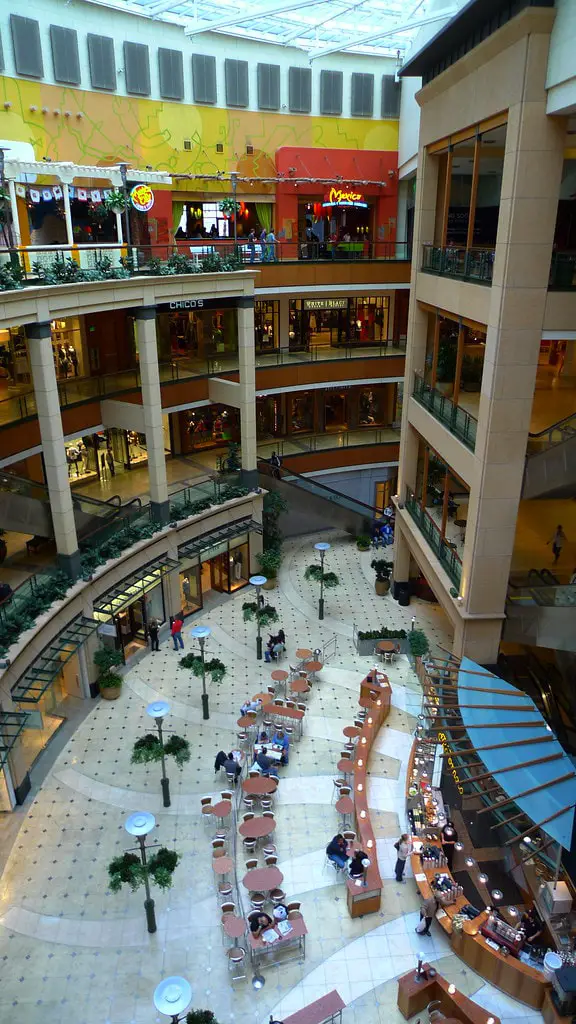
Urban Footprint and Structural Identity – Built Form in Downtown Seattle
As of 2025, Pacific Place remains in flux. The mall’s tenant occupancy rate is around 45 percent.
Pacific Place spans 335,000 square feet and rises five stories from the corner of Pine Street and Sixth Avenue.
The design came from NBBJ, a firm known for its commercial work in downtown cores.
Unlike suburban malls, this one threaded directly into the city grid.
Entrances opened at sidewalk level. Escalators and elevators pulled foot traffic upward through floors lined with glass and polished stone.
One of its distinct elements is the enclosed pedestrian bridge that connects it to Nordstrom’s flagship.
That skybridge crosses Pine Street and acts as both a physical and retail link.
Shoppers can move between buildings without stepping into traffic.
For retailers, that meant more exposure. For architects, it gave the block a joined identity.
The top floor holds AMC Theatres. Before AMC took over, General Cinema ran the screens.
Alongside the cinema, upper levels were fitted with restaurants and fast-casual food options.
Din Tai Fung, a Taiwan-based chain, leased one of those higher-floor units.
Haidilao Hot Pot followed later, anchoring the dining corner on the other floor.
Pike Place Chowder, Johnny Rockets, and Seng Tong Thai also help maintain foot traffic.
Pacific Place integrates a large parking garage—1,200 stalls, wrapped into the development.
That underground facility dates back to earlier phases of the site and continues to serve both the mall and nearby Nordstrom.
The exterior reflects the late-1990s interest in transparency and verticality.
Broad panes of glass open the interior of the street, making the mall visible to pedestrians.
That design choice helped position Pacific Place in contrast to the older brick-and-mortar buildings nearby.
It still stands out when looking for things to do in Seattle, Washington, especially between Westlake Center and the Convention Center.
Outside the building, the city is running its play.
“Seattle Restored,” a storefront recovery program, is backing small business pop-ups and artist-run installations.
It’s one of several ways the broader retail corridor is being nudged back into motion—block by block, lease by lease.
